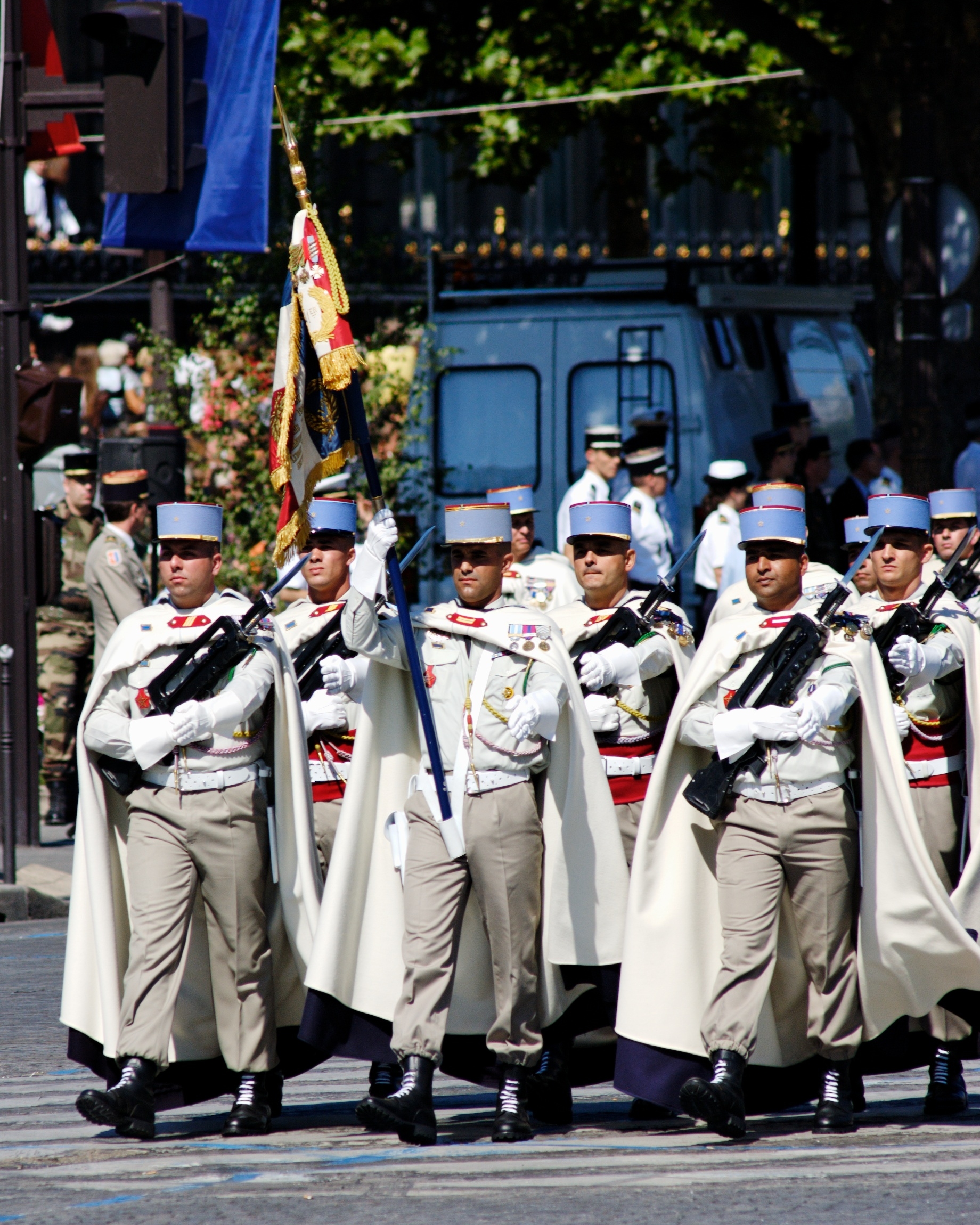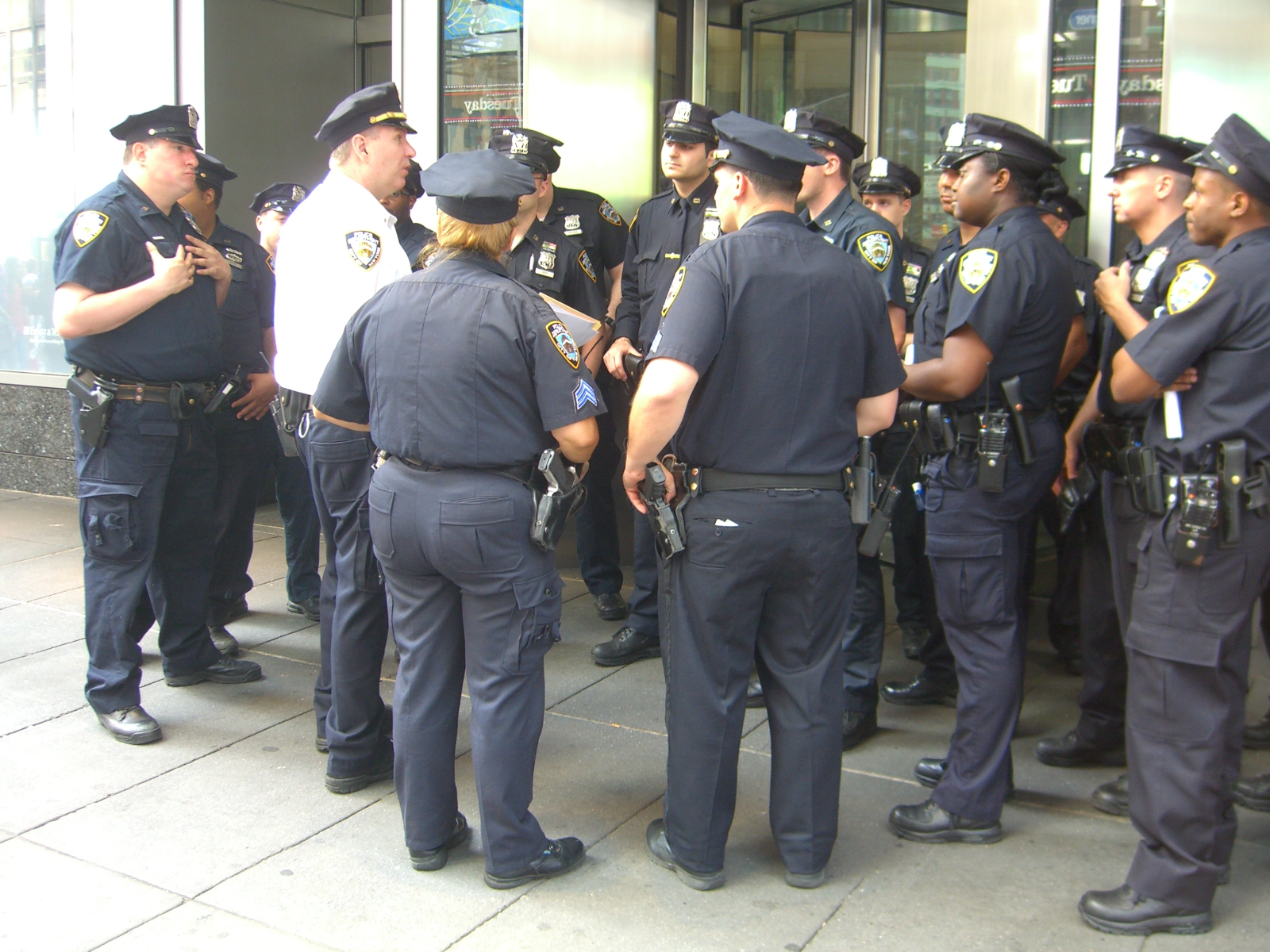|
National Gendarmerie (Senegal)
The National Gendarmerie (french: Gendarmerie nationale) is one of two national law enforcement force of Senegal (the other being the Police Force), serving as a branch of the Armed Forces of Senegal. As a military unit, it is placed under the jurisdiction of the Ministry of Armed Forces. It is similar in nature to their French counterparts as well as the State Police in the U.S. It is one of the largest African contributors to peacekeeping missions around the world. History Origins The history of the Senegalese gendarmerie is closely linked to that of the Red Guard of Senegal. It evolved from a French colonial Spahi detachment sent to Senegal in 1845. This detachment (which became today's Red Guard) was the cadre around which the "Colonial Gendarmerie" was formed. In 1854, a detachment of gendarmes on foot was created by the imperial decree of 30 September. Colonial Gendarmerie On 1 January 1928, by a decree of the Governor-General of French West Africa, the "Mobile ... [...More Info...] [...Related Items...] OR: [Wikipedia] [Google] [Baidu] |
Ouakam
Ouakam is a commune d'arrondissement in the city of Dakar, Senegal. The commune is the birthplace of French politicians Ségolène Royal and Rama Yade and Senegalese writer and politician Birago Diop. Ouakam is one of the four original Lebou villages of the Cap-Vert Peninsula, along with Yoff, Ngor, and Hann. Description Ouakam is an ancient village that has since been absorbed as a residential suburb of Dakar. It is situated on the Atlantic coast at the foot of a range of hills, the Deux Mamelles, Ouakam has two beaches, one of which is popular among surfers. According to the 2013 census, the commune of Ouakam comprised 74,692 people. The Mosque of Divinity was built by Mohamed Gorgui Seyni Guèye (1926–2007), a holy man who claimed to see the mosque in a dream. He followed the dream to the beach on June 28, 1973, where he received an order from the Lord to build it. The African Renaissance Monument was constructed on one of the Deux Mamelles hills in Ouakam and was unveil ... [...More Info...] [...Related Items...] OR: [Wikipedia] [Google] [Baidu] |
Governor-General Of French West Africa
This is a list of European colonial administrators responsible for the territory of French West Africa, an area equivalent to modern-day Mauritania, Mali, Niger, Senegal, Guinea, Ivory Coast, Burkina Faso, Benin and Togo. List (Dates in italics indicate ''de facto'' continuation of office) See also *French West Africa *Ivory Coast *Benin **French Dahomey *Mali **French Sudan *Guinea *Mauritania *Niger *Senegal *Burkina Faso **French Upper Volta *Togo **French Togoland *Lists of office-holders *List of French possessions and colonies External links * {{DEFAULTSORT:Governors-General Of French West Africa History of Ivory Coast French Dahomey Political history of Mali History of Guinea History of Mauritania History of Niger History of Senegal 20th century in Burkina Faso West Africa West Africa or Western Africa is the westernmost region of Africa. The United Nations defines Western Africa as the 16 countries of Benin, Burkina Faso, Cape Verde, The Gambia, Ghan ... [...More Info...] [...Related Items...] OR: [Wikipedia] [Google] [Baidu] |
Spahi
Spahis () were light-cavalry regiments of the French army recruited primarily from the indigenous populations of Algeria, Tunisia and Morocco. The modern French Army retains one regiment of Spahis as an armoured unit, with personnel now recruited in mainland France. Senegal also maintains a mounted unit with spahi origins as a presidential escort: the Red Guard. Etymology The name is the French form of the Ottoman Turkish word , a word derived from New Persian , meaning "army", or "horsemen"; or from , meaning "warriors". Early history Following the French occupation of Algiers in 1830, detachments of locally recruited irregular horsemen were attached to the regiments of light cavalry assigned to North African service. These auxiliaries were designated as ''chasseurs spahis''. Between 1834 and 1836 they were organised into four squadrons of regular spahis. In 1841 the 14 squadrons by then in existence were brought together in a single corps of spahis. Finally, in 1845 t ... [...More Info...] [...Related Items...] OR: [Wikipedia] [Google] [Baidu] |
Red Guard Of Senegal
The Red Guard of Senegal (French: ''Garde Rouge du Sénégal'') is a unit of the Senegalese Gendarmerie that is responsible for presidential security. It also has ceremonial duties and assists in general policing. It is very similar in concept to the French Republican Guard, with which it is officially twinned. The Red Guard is the direct descendant of a French colonial Spahi detachment sent to Senegal in 1845. This spahi unit is also known as the Red Guard of the Presidency (''Garde Rouge de la Présidence'') or Red Guard of Dakar. The name "Red Guard" is derived from their red tunics and burnous cloaks. Background and heritage French Spahis were required to range over vast areas of the Sahara desert and in 1845 a squadron was sent to Saint-Louis du Sénégal in response to tribal conflicts on the banks of the Senegal river. This detachment became a Senegalese-recruited branch of the Spahis. The Senegalese Spahis saw extensive active service in French West Africa and in Moroc ... [...More Info...] [...Related Items...] OR: [Wikipedia] [Google] [Baidu] |
State Police (United States)
In the United States, the state police is a police body unique to each U.S. state, having statewide authority to conduct law enforcement activities and criminal investigations. In general, state police officers or highway patrol officers, known as state troopers, perform functions that do not fall within the jurisdiction of the county sheriff (Vermont being a notable exception), such as enforcing traffic laws on state highways and interstate expressways, overseeing the security of the state capitol complex, protecting the governor, training new officers for local police forces too small to operate an academy and providing technological and scientific services. They support local police and help to coordinate multi-jurisdictional task force activity in serious or complicated cases in those states that grant full police powers statewide. A general trend has been to bring all of these agencies under a state-level Department of Public Safety. Additionally, they may serve under diff ... [...More Info...] [...Related Items...] OR: [Wikipedia] [Google] [Baidu] |
National Gendarmerie
The National Gendarmerie (french: Gendarmerie nationale, ) is one of two national law enforcement forces of France, along with the National Police. The Gendarmerie is a branch of the French Armed Forces placed under the jurisdiction of the Ministry of the Interior, with additional duties from the Ministry of Armed Forces. Its responsibilities include policing smaller towns, suburbs and rural areas, along with special subdivisions like the GSPR. By contrast, the National Police is a civilian law enforcement agency that is in charge of policing cities and larger towns. Because of its military status, the Gendarmerie also fulfills a range of military and defence missions, including having a cybercrime division. The Gendarmerie has a strength of around 102,269 people (as of 2018). The Gendarmerie is the heir of the , the oldest police force in France, dating back to the Middle Ages. The Gendarmerie has influenced the culture and traditions of gendarmerie forces around the world, ... [...More Info...] [...Related Items...] OR: [Wikipedia] [Google] [Baidu] |
Ministry Of Armed Forces (Senegal)
The Ministry of Armed Forces (), is the government agency responsible for overseeing the national defense and security of the Republic of Senegal. It is one of the key ministries in the Senegalese government and plays a crucial role in the management of the Senegalese Armed Forces. Overview and Responsibilities The Ministry of Armed Forces is tasked with the formulation and implementation of defense policies, as well as the coordination and management of the armed forces of Senegal. The Ministry of Defence has several core responsibilities, including: National Security, Defence Planning and Policy, Armed Forces Management, engaging in regional and international defense initiatives, and Civil-Military Relations. Minister of Defence The Minister of Defence is the political head of the Ministry of Armed Forces. They are appointed by the President of Senegal and are responsible for providing strategic direction and leadership to the ministry. The minister oversees the implemen ... [...More Info...] [...Related Items...] OR: [Wikipedia] [Google] [Baidu] |
Senegal
Senegal,; Wolof: ''Senegaal''; Pulaar: 𞤅𞤫𞤲𞤫𞤺𞤢𞥄𞤤𞤭 (Senegaali); Arabic: السنغال ''As-Sinighal'') officially the Republic of Senegal,; Wolof: ''Réewum Senegaal''; Pulaar : 𞤈𞤫𞤲𞤣𞤢𞥄𞤲𞤣𞤭 𞤅𞤫𞤲𞤫𞤺𞤢𞥄𞤤𞤭 (Renndaandi Senegaali); Arabic: جمهورية السنغال ''Jumhuriat As-Sinighal'') is a country in West Africa, on the Atlantic Ocean coastline. Senegal is bordered by Mauritania to the north, Mali to the east, Guinea to the southeast and Guinea-Bissau to the southwest. Senegal nearly surrounds the Gambia, a country occupying a narrow sliver of land along the banks of the Gambia River, which separates Senegal's southern region of Casamance from the rest of the country. Senegal also shares a maritime border with Cape Verde. Senegal's economic and political capital is Dakar. Senegal is notably the westernmost country in the mainland of the Old World, or Afro-Eurasia. It owes its name to the ... [...More Info...] [...Related Items...] OR: [Wikipedia] [Google] [Baidu] |
Law Enforcement
Law enforcement is the activity of some members of government who act in an organized manner to enforce the law by discovering, deterring, rehabilitating, or punishing people who violate the rules and norms governing that society. The term encompasses police, courts, and corrections. These three components may operate independently of each other or collectively, through the use of record sharing and mutual cooperation. The concept of law enforcement dates back to ancient times, and forms of law enforcement and police have existed in various forms across many human societies. Modern state legal codes use the term peace officer, or law enforcement officer, to include every person vested by the legislating state with police power or authority; traditionally, anyone sworn or badged, who can arrest any person for a violation of criminal law, is included under the umbrella term of law enforcement. Although law enforcement may be most concerned with the prevention and punishment o ... [...More Info...] [...Related Items...] OR: [Wikipedia] [Google] [Baidu] |



